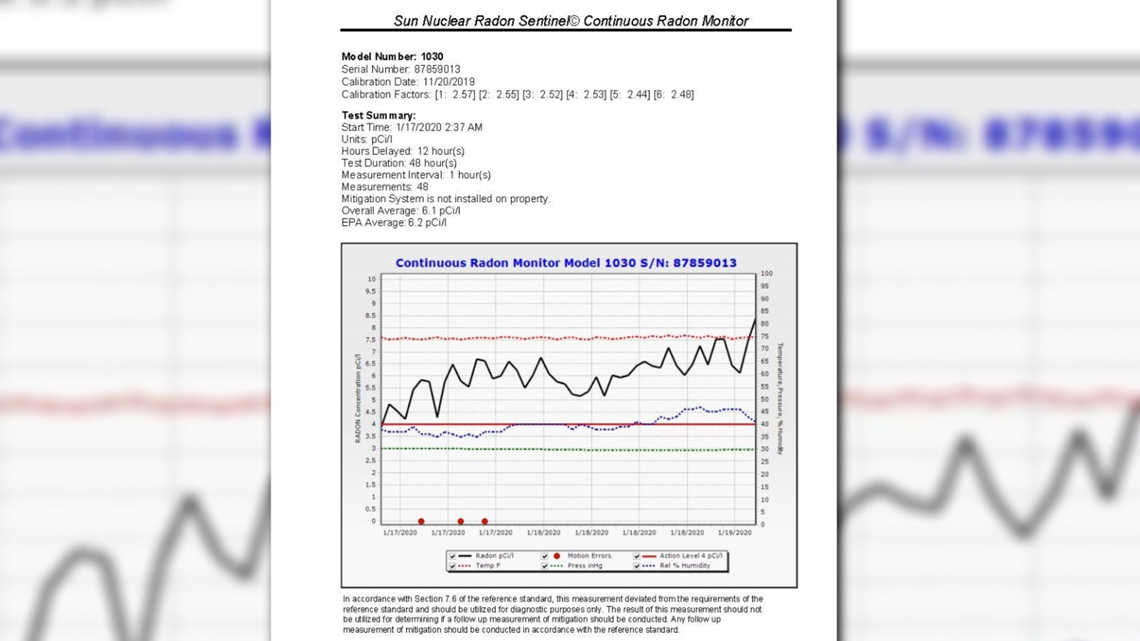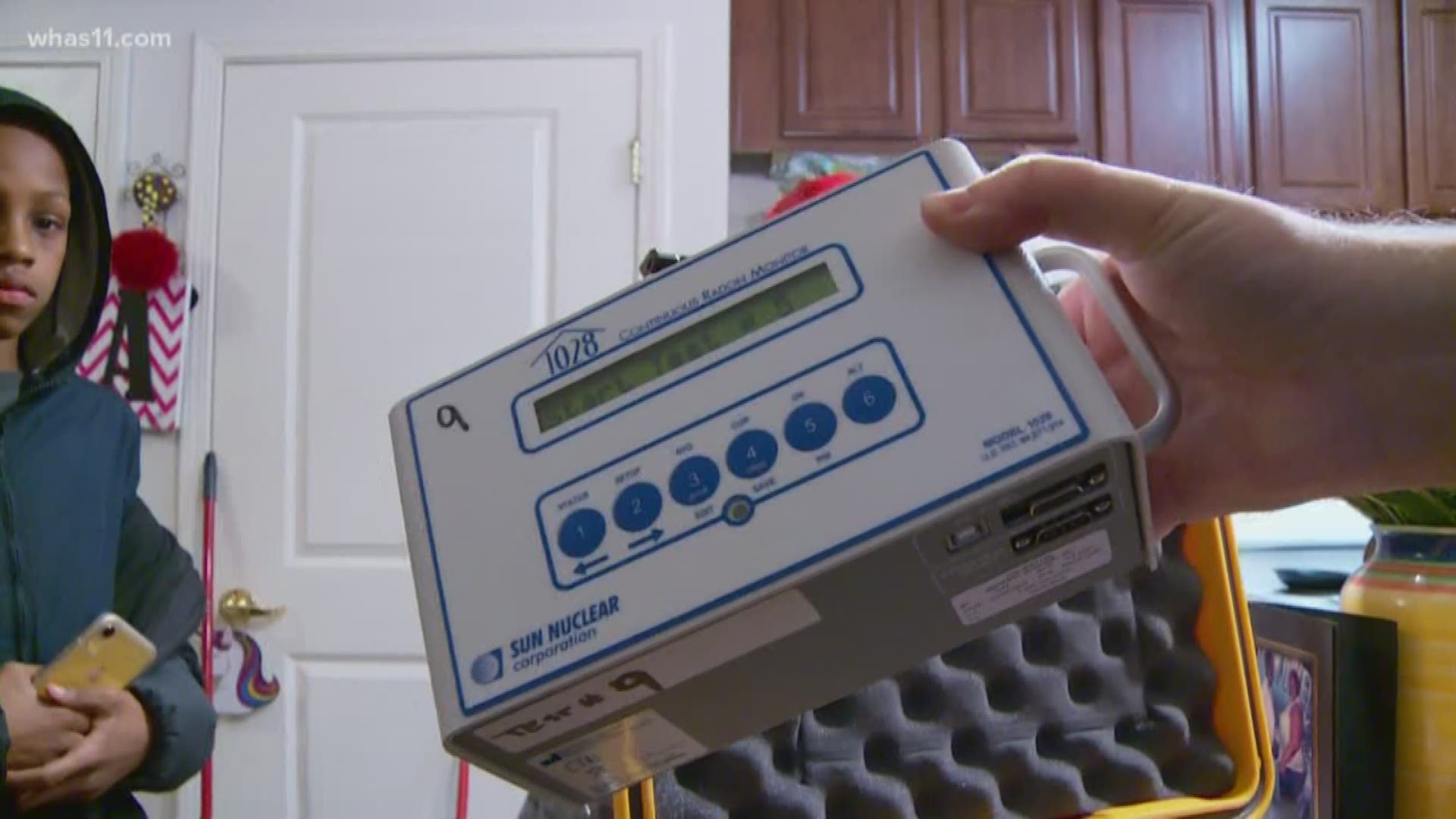LOUISVILLE, Ky. — It’s a naturally occurring health hazard and it’s blamed for killing an estimated 21,000 people each year. Radon, a radioactive gas, is widespread throughout the nation, and is particularly bad in Kentucky.
“Here in Kentucky we’re over a cave system,” Kyle Hoylman, managing partner of Protect Environmental, said. “This is a radon hotbed.”
The cave system allows radon to move more freely, and then come from underground to above ground into buildings. All it takes is a crack in the foundation or the sump pump well for the gas to get in.
“Radon also changes, so as the uranium decays, the pathways into the building open and close, the radon levels can change,” Hoylman said.
Radon is the leading cause of lung cancer among non-smokers. That’s why the Environmental Protection Agency recommends testing every five years, and it’s why that testing is a staple of home inspections. However, testing at public housing is near non-existent.
After an expose by The Oregonian titled “Cancer Cloud” was published, several in Congress including both of Oregon’s U.S. Senators demanded that the Department of Housing and Urban Development seriously address radon, which HUD was already directed to do in 1988.
Locally, FOCUS received records from the Louisville Metro Housing Authority (LMHA) and found that only 54 spaces at approximately 4,000 public housing units in the city were tested for radon over the last five years. That’s about 1% of all units.
All of the tests came in under the EPA’s action level of 4.0 picocuries.
The Housing Authority had the majority of those tests done at Sheppard Square.
“If it’s a new build development or a substantial rehab, then the mitigation system is built into that redevelopment,” the head of LMHA Lisa Osanka said. “Then it’s tested before occupancy.”
Osanka pointed out that privately managed complexes, such as Liberty Green, are responsible for doing the testing. Liberty Green is managed by The Community Builders and a representative from the company stated via email that they “are not aware of any certified radon testing conducted at Liberty Green.”
Along with Kyle Hoylman, who is also Chair of the Kentucky Radon Program Advisory Committee, we were welcomed in by residents at six units to set up our own tests – three units at Liberty Green and three units at Sheppard Square.
The standard charcoal test kit was used as a quality control test to verify results from the more sophisticated continuous radon monitors placed in the homes.
“It’s going to take an hourly sample and then 48 hours it’s going to turn off,” Hoylman told residents.
Several days later we returned to get the results. Two of the six units tested higher than the EPA’s action level of 4.0 picocuries. One home tested at 5.9 picocuries and the other 6.2 picocuries.


“The equivalent of well over 350 chest X-rays per year, radiation dose equivalent,” Hoylman said.
Both of the troubling test results came from Liberty Green, while the three units at Sheppard Square were in the clear.
“It’s a cause for concern,” Osanka stated.
While the LMHA executive director promised to look into the bad results, she revealed that due to a recent letter from HUD recommending more radon testing, the Housing Authority had more tests done at Parkway Place in January.
There are 654 total units at Parkway Place, but only 45 vacant units, which came in at low radon levels, were tested.
The city’s Housing Authority has a contract with TriEco.
A new Kentucky law on radon, in effect since June, requires that inspectors are certified with either the National Radon Proficiency Program (NRPP) or the National Radon Safety Board (NRSB).
The law also requires certified radon inspectors to follow the American National Standards Institute (ANSI) guidelines.
ANSI guidelines mandate that if radon testing is done at multi-family buildings, 100% of ground level units must be tested as well as 10% of the upper level units.
TriEco’s inspectors were not nationally certified, and the 45 units they tested were well under what’s required.
TriEco’s owner, Neil Talwar, emailed FOCUS a letter stating that his inspector took the NRPP exam in the past, and also wrote that at Parkway Place, the company followed the HUD guidelines of testing only 25% of ground level units.
FOCUS received the following statement from Talwar:
Kentucky’s state law of 100%, however, supersedes the HUD guidelines.
In a phone call with Dallas Jones, NRPP’s Executive Director, he told us the inspector Talwar was talking about did take the exam five years ago, but didn’t pursue certification.
After FOCUS started digging around, that inspector just applied for certification this week.
“Those are concerns,” Councilwoman Barbara Sexton Smith (D) said about the high levels we found at Liberty Green.
“We need to take immediate action to protect the people that are living in these units,” Sexton Smith said. “And then have a longer term plan in place.”
More from FOCUS on radon:
Make it easy to keep up-to-date with more stories like this. Download the WHAS11 News app now. For Apple or Android users.
Have a news tip? Email assign@whas11.com, visit our Facebook page or Twitter feed.

